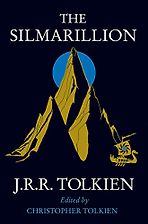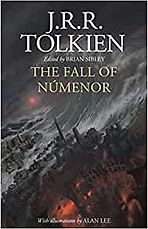The Silmarillion
J R R Tolkien, Christopher Tolkien (editor)
The paperback edition of The Silmarillion pictured here, published in 2001, features JRR Tolkien’s drawing on the front cover and an extremely useful index of names at the back. You’ll find yourself consulting it frequently.
Recommendations from our site
“The Silmarils are jewels filled with light, and like the rings, they lead to trouble…Tolkien began writing The Silmarillion well before his other works but it was only published in 1977 after his death. Chronologically, it’s about the period before The Hobbit and The Lord of the Rings, but it’s better to read it afterwards. It’s filling in gaps in the ‘history’ (including the forging of the ring) but doesn’t have the narrative flow of the other books and is quite hard to read. Or to put it another way, The Simarillion is only a book to read if you’ve really caught the Tolkien bug and want to know everything about his world.” Read more...
Lord of the Rings Books in Order
Sophie Roell, Journalist
“Tolkien didn’t set out to write novels, he set out to create a world. He wrote The Hobbit almost by accident–because he was telling the stories to his children, you see. After that his publishers wanted a follow up to The Hobbit, so he said ‘Well, I’ve got this thing I’ve been working on,’ which was the manuscript of The Silmarillion. They balked at that and asked if he had anything else with more Hobbits in it. So, he set himself to the task of writing a sequel which grew and grew and grew.” Read more...
Books Drawn From Myth and Fairy Tale
Alan Lee, Cartoonists & Illustrator
Other books by Christopher Tolkien (editor) and J R R Tolkien
Our most recommended books
-

The Silmarillion
J R R Tolkien, Christopher Tolkien (editor) -

Flora of Middle-Earth: Plants of J R R Tolkien's Legendarium
Walter S. Judd & Graham A. Judd -

The Hobbit
by J R R Tolkien -

The Fellowship of the Ring (Lord of the Rings Part One)
by J R R Tolkien -

The Two Towers (Lord of the Rings Part Two)
by J R R Tolkien -

The Fall of Númenor
J R R Tolkien, Alan Lee (illustrator), Brian Sibley (editor)












